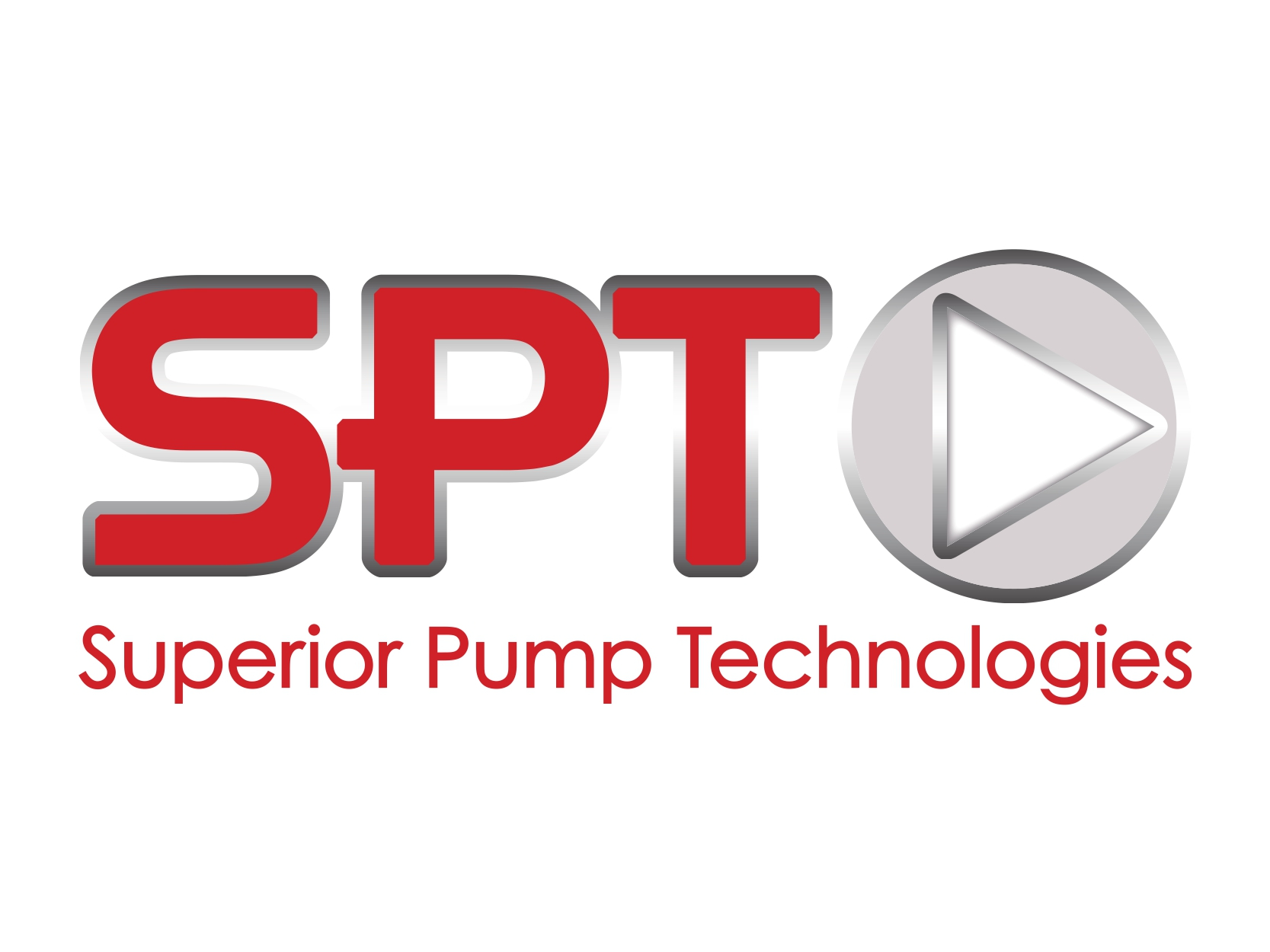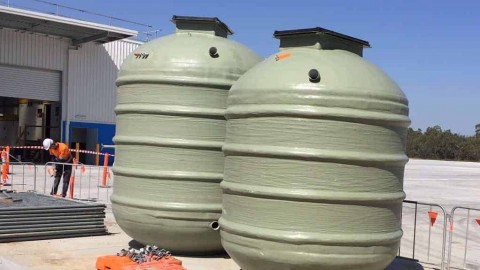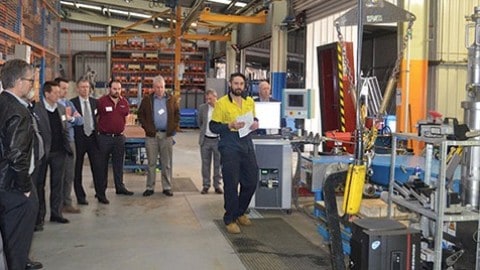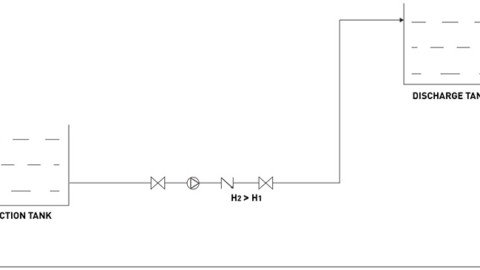by Pump Industry Associate Editor, Michelle Goldsmith
Choosing the right valves for your system can be vital to its performance, efficiency and longevity. Different valve types have different functionalities and suit specific applications.
Some of the most important factors that decide a valve’s suitability for a particular application include how the materials used interact with the particular substance to be conveyed, the amount of substance and the desired flow rate, and the overall mechanical design of the system.
Here we will take a closer look at some of the most common valve types and their suitability for particular applications.
Gate valves
Gate valves (also known as sluice valves) are a common type of on/off function valve, that allow the flow of fluid through the system to be shut on or off via the use of a sliding part, or gate, that can be moved in or out of the path of the conveyed substance. This is particularly useful for straight-line flows and when you wish to isolate a particular area of a pipeline.
Depending on the materials used in its manufacture, gate valves can be used in applications involving the conveyance of both neutral and corrosive liquids, slurry, fibrous suspensions, neutral or vacuum gases and lubricating powders such as graphite or talcum.
In some cases the rectangular or round ‘gate’ can also be used to regulate flow by controlling the extent of the aperture through which the fluid can move, with a fully open gate allowing for maximum flow. However, most gate valves are not designed for this purpose and using them this way is not recommended. If precisely controlling flow rate is your desire there may be other types of valve that better suit your application.
Rotary ball valves
Rotary ball valves serve a similar function to gate valves in that they primarily work as on/off valves that either completely restrict or enable the flow of the conveyed substance.
These valves utilise a ball like structure containing channels through which fluid may flow. The ball can then be rotated so that entry to the channels no longer matches up with the passage of the fluid, thus restricting flow through the valve.
Rotary ball valves may be used for a wide range of applications such as isolating sections of pipelines conveying neutral or corrosive liquids, slurry, and neutral, corrosive or vacuum gases.
Plug valves
Plug valves are another type of on/off valve that make use of a rotating part containing passageways through which fluid may flow when the valve is open.
The cylindrical or conically tapered plug in a plug valve contains one or more hollow passageways going sideways through its width. When the handle of the valve is turned to the off position the plug is rotated so that the passageway is blocked off and flow through the valve is prevented.
Depending on the particular models material make-up, plug valves can be used for a wide variety of applications involving the isolation of sections of pipeline conveying neutral or corrosive fluids, slurry, and neutral or corrosive gases.
Diaphragm valves
Diaphragm valves, also known as membrane valves, involve a flexible diaphragm material connected to a compressor, which is moved up and down by the valve’s stem to open and close the valve. The valve may be used to shut the flow of fluid completely on or off, or to control the rate of flow.
It is the diaphragm material and not the operating mechanism of the valve that is exposed to the media within the pipeline. Therefore when the diaphragm is made of compliant materials the valve may be used for hygienic applications such as in the manufacture of pharmaceuticals, food and beverages.
There are two main configurations for diaphragm valves, the weir configuration and the straight-through configuration. In the weir configuration the valve seals over a raised weir (or saddle) allowing a small diaphragm movement to close the valve, which may reduce wear on the material. However, this configuration does not allow for very precise flow rate control, especially at lower flowrates. In the straight-through configuration the diaphragm closes over a depressed seat that matches up with the shape of the compressor. This allows for better flow control and facilitates line clearing. However, the larger movement requires a more flexible diaphragm material and can mean that the diaphragm needs to be replaced more often.
Diaphragm valves composed of suitable materials may be used for on/off and flow control functions in pipelines containing neutral, corrosive or hygienic fluids, slurry, fibrous suspensions, and neutral or corrosive gases.
Butterfly valves
Butterfly valves utilise a disk-shaped closing mechanism positioned in the centre of the pipe and are controlled by a rod passing through the disk which is connected to an actuator on the outside of the valve. Rotating the actuator rotates the disk, which can be turned face-on to the flow to completely block fluid from passing, at various angles to control flowrate, or completely parallel to allow for maximum flow rate.
Disk valves are often lightweight and depending on their materials may be used for on/off or control functions in a variety of applications. These include use in systems conveying neutral, corrosive or hygienic fluids, slurry, and neutral, corrosive or vacuum gases.
Globe valves
Globe valves are primarily used for modulating flow through a pipe system.
Traditionally these valves had a spherical body, lending them their name, although this is no longer always the case.
Globe valves consist of a moveable disk shaped plug and a stationary ring seat. The plug is connected to a stem that is controlled on the outside of the valve either manually by a hand wheel or automatically by an actuator. The plug can be screwed into the seat to throttle the flow of fluid through the valve.
Globe valves are mainly used in pipe systems conveying neutral or corrosive fluids or neutral, corrosive or vacuum gases.
Needle valves
Needle valves are primarily used for the precise regulation of flow through systems with low overall flow rates.
These valves regulate flow through the use of a small port and a tapered, needle-shaped plunger, which may be gradually retracted from its seat to allow more fluid to pass through the valve by turning the attached screw. As the screw is extremely fine-threaded, it takes many turns to fully retract the plunger allowing for very small flow adjustments.
Needle valves may be used in applications involving the control of flow through systems conveying neutral liquids, or neutral or corrosive gases.
Squeeze valves
Squeeze valves are pressure-operated valves that may perform both on/off and flow modulating functions in a range of applications. They involve the use of a tubular cuff element that is squeezed together via mechanical, hydraulic or atmospheric pressure to block the flow of fluid through a system. To open the valve, the pressure is released and the cuff relaxes. Different levels of pressure can close the valve to various degrees to regulate the flow.
Squeeze valves composed of compliant materials and with appropriate closing mechanisms are used in systems conveying hygienic fluids, slurry, fibrous suspensions or abrasive or lubricating powder solids.
Pinch valves
Pinch valves perform both on/off and flow regulating functions, often via direct contact to the process tubing of a system. The valve consists of a sleeve or tubing and a body. The sleeve is pinched shut by either mechanical or pressure-operated means preventing flow though the valve. The sleeve may be pinched to varying degrees to modulate flow.
Because the conveyed substance is not exposed to the outside environment or any mechanisms that contain seats or crevices where material may become caught, pinch valves are useful in hygienic applications or those where the conveyed material is a solid.
Pinch valves composed of appropriate materials are used in applications involving the conveyance of hygienic fluids, slurry, fibrous suspensions, or abrasive or lubricating powders.
Spiral sock valves
Spiral sock valves are membrane valves that perform on/off and flow control functions in systems conveying powder solids via the twisting of a fabric tube or ‘sock’. The tube can be twisted so that flow is completely inhibited or twisted to various degrees to regulate flow. A completely untwisted tube allows maximum flow through the valve.
Spiral sock valves are only appropriate in systems conveying solids and are primarily used for applications involving abrasive or lubricating powders. ■




















